Zhichun Li
Physical-layer Adversarial Robustness for Deep Learning-based Semantic Communications
May 12, 2023
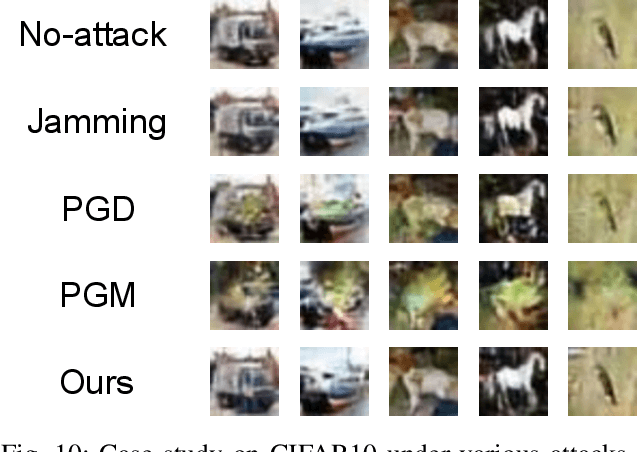
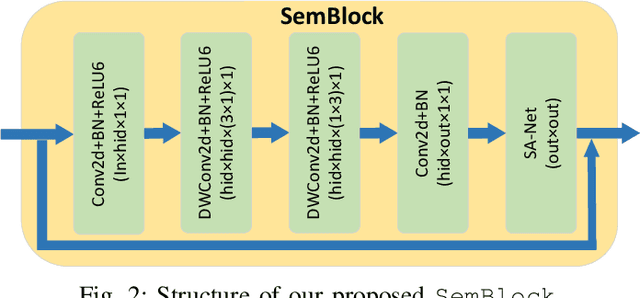
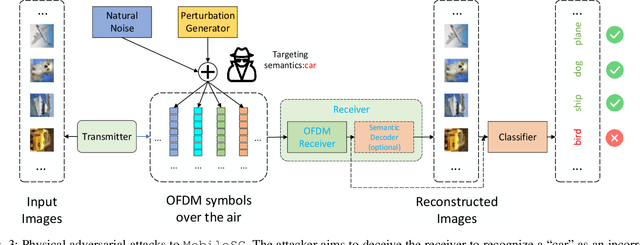
Abstract:End-to-end semantic communications (ESC) rely on deep neural networks (DNN) to boost communication efficiency by only transmitting the semantics of data, showing great potential for high-demand mobile applications. We argue that central to the success of ESC is the robust interpretation of conveyed semantics at the receiver side, especially for security-critical applications such as automatic driving and smart healthcare. However, robustifying semantic interpretation is challenging as ESC is extremely vulnerable to physical-layer adversarial attacks due to the openness of wireless channels and the fragileness of neural models. Toward ESC robustness in practice, we ask the following two questions: Q1: For attacks, is it possible to generate semantic-oriented physical-layer adversarial attacks that are imperceptible, input-agnostic and controllable? Q2: Can we develop a defense strategy against such semantic distortions and previously proposed adversaries? To this end, we first present MobileSC, a novel semantic communication framework that considers the computation and memory efficiency in wireless environments. Equipped with this framework, we propose SemAdv, a physical-layer adversarial perturbation generator that aims to craft semantic adversaries over the air with the abovementioned criteria, thus answering the Q1. To better characterize the realworld effects for robust training and evaluation, we further introduce a novel adversarial training method SemMixed to harden the ESC against SemAdv attacks and existing strong threats, thus answering the Q2. Extensive experiments on three public benchmarks verify the effectiveness of our proposed methods against various physical adversarial attacks. We also show some interesting findings, e.g., our MobileSC can even be more robust than classical block-wise communication systems in the low SNR regime.
Heterogeneous Graph Matching Networks
Oct 17, 2019

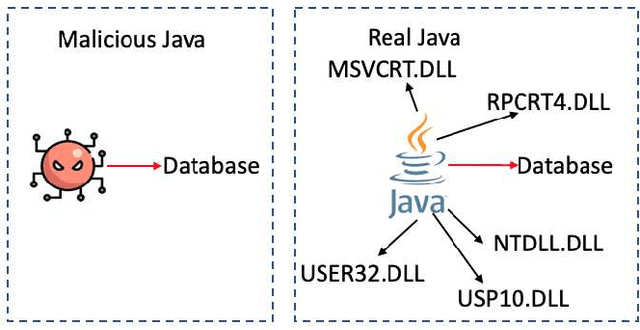

Abstract:Information systems have widely been the target of malware attacks. Traditional signature-based malicious program detection algorithms can only detect known malware and are prone to evasion techniques such as binary obfuscation, while behavior-based approaches highly rely on the malware training samples and incur prohibitively high training cost. To address the limitations of existing techniques, we propose MatchGNet, a heterogeneous Graph Matching Network model to learn the graph representation and similarity metric simultaneously based on the invariant graph modeling of the program's execution behaviors. We conduct a systematic evaluation of our model and show that it is accurate in detecting malicious program behavior and can help detect malware attacks with less false positives. MatchGNet outperforms the state-of-the-art algorithms in malware detection by generating 50% less false positives while keeping zero false negatives.
Adversarial Defense Framework for Graph Neural Network
May 10, 2019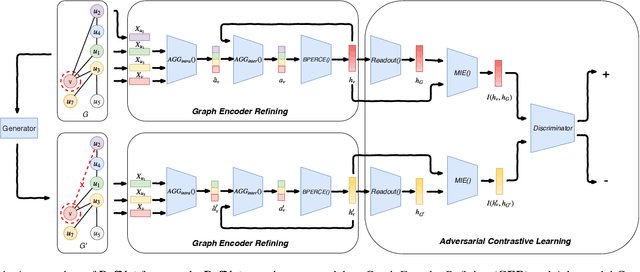

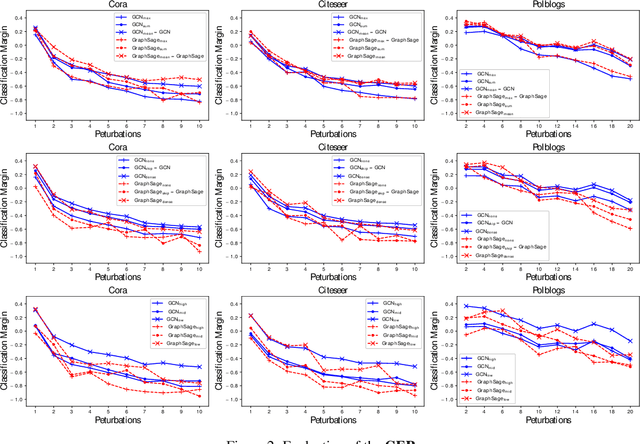
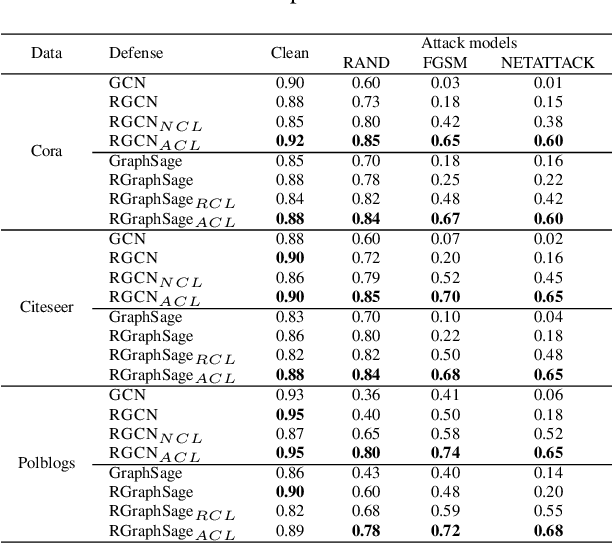
Abstract:Graph neural network (GNN), as a powerful representation learning model on graph data, attracts much attention across various disciplines. However, recent studies show that GNN is vulnerable to adversarial attacks. How to make GNN more robust? What are the key vulnerabilities in GNN? How to address the vulnerabilities and defense GNN against the adversarial attacks? In this paper, we propose DefNet, an effective adversarial defense framework for GNNs. In particular, we first investigate the latent vulnerabilities in every layer of GNNs and propose corresponding strategies including dual-stage aggregation and bottleneck perceptron. Then, to cope with the scarcity of training data, we propose an adversarial contrastive learning method to train the GNN in a conditional GAN manner by leveraging the high-level graph representation. Extensive experiments on three public datasets demonstrate the effectiveness of DefNet in improving the robustness of popular GNN variants, such as Graph Convolutional Network and GraphSAGE, under various types of adversarial attacks.
Deep Program Reidentification: A Graph Neural Network Solution
Dec 10, 2018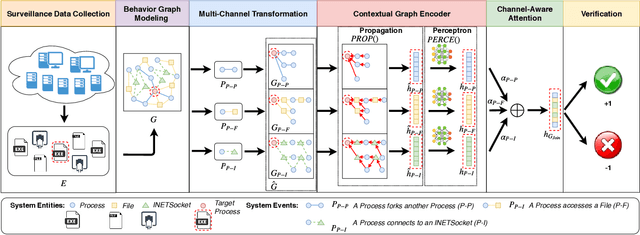
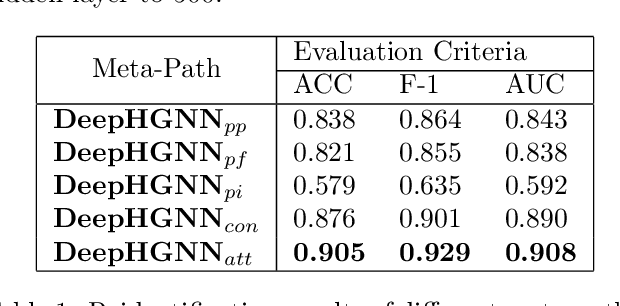
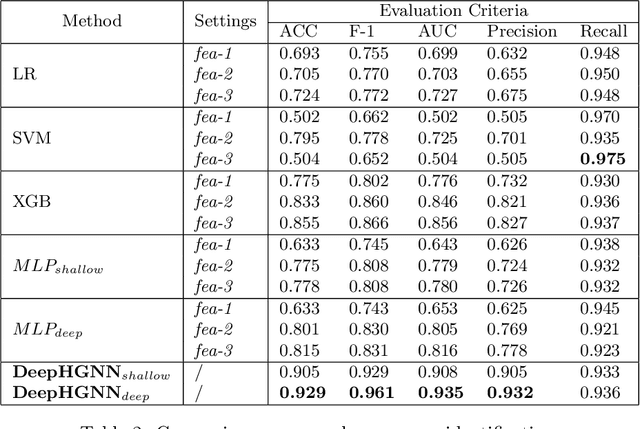
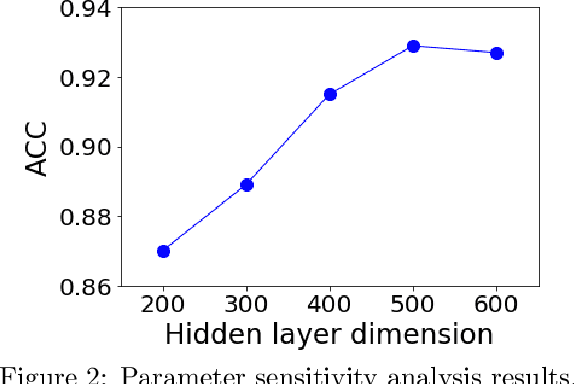
Abstract:Program or process is an integral part of almost every IT/OT system. Can we trust the identity/ID (e.g., executable name) of the program? To avoid detection, malware may disguise itself using the ID of a legitimate program, and a system tool (e.g., PowerShell) used by the attackers may have the fake ID of another common software, which is less sensitive. However, existing intrusion detection techniques often overlook this critical program reidentification problem (i.e., checking the program's identity). In this paper, we propose an attentional multi-channel graph neural network model (DeepRe-ID) to verify the program's identity based on its system behaviors. The key idea is to leverage the representation learning of the program behavior graph to guide the reidentification process. We formulate the program reidentification as a graph classification problem and develop an effective multi-channel attentional graph embedding algorithm to solve it. Extensive experiments --- using real-world enterprise monitoring data and real attacks --- demonstrate the effectiveness of DeepRe-ID across multiple popular metrics and the robustness to the normal dynamic changes like program version upgrades.
Accelerating Dependency Graph Learning from Heterogeneous Categorical Event Streams via Knowledge Transfer
Aug 25, 2017


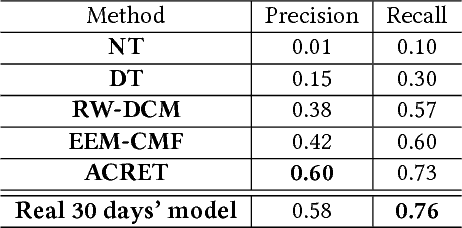
Abstract:Dependency graph, as a heterogeneous graph representing the intrinsic relationships between different pairs of system entities, is essential to many data analysis applications, such as root cause diagnosis, intrusion detection, etc. Given a well-trained dependency graph from a source domain and an immature dependency graph from a target domain, how can we extract the entity and dependency knowledge from the source to enhance the target? One way is to directly apply a mature dependency graph learned from a source domain to the target domain. But due to the domain variety problem, directly using the source dependency graph often can not achieve good performance. Traditional transfer learning methods mainly focus on numerical data and are not applicable. In this paper, we propose ACRET, a knowledge transfer based model for accelerating dependency graph learning from heterogeneous categorical event streams. In particular, we first propose an entity estimation model to filter out irrelevant entities from the source domain based on entity embedding and manifold learning. Only the entities with statistically high correlations are transferred to the target domain. On the surviving entities, we propose a dependency construction model for constructing the unbiased dependency relationships by solving a two-constraint optimization problem. The experimental results on synthetic and real-world datasets demonstrate the effectiveness and efficiency of ACRET. We also apply ACRET to a real enterprise security system for intrusion detection. Our method is able to achieve superior detection performance at least 20 days lead lag time in advance with more than 70% accuracy.
Behavior Query Discovery in System-Generated Temporal Graphs
Nov 19, 2015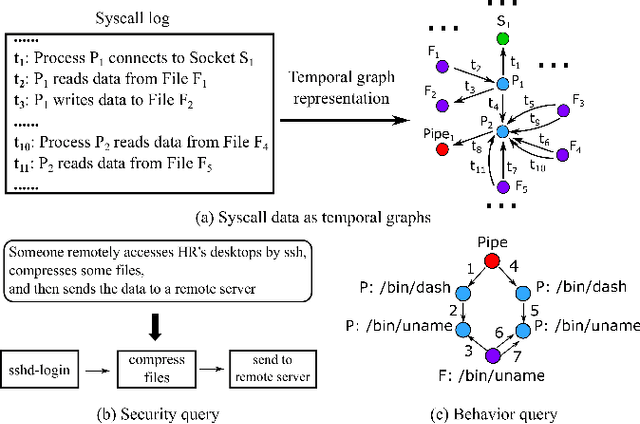
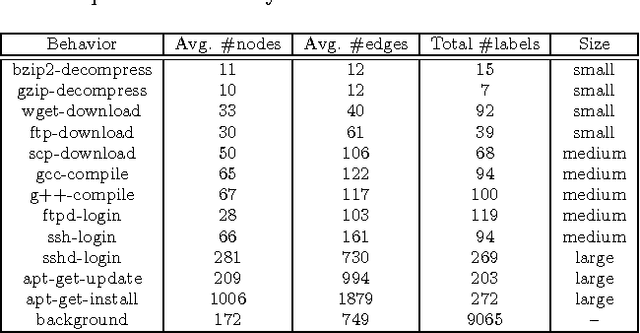

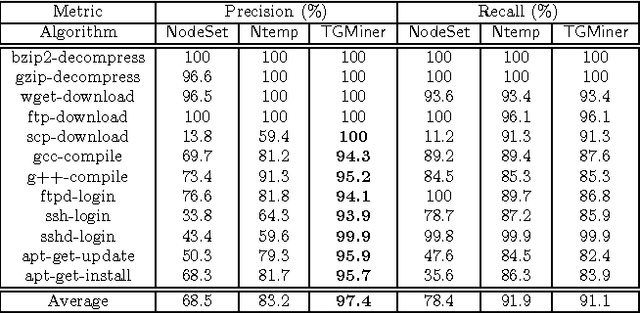
Abstract:Computer system monitoring generates huge amounts of logs that record the interaction of system entities. How to query such data to better understand system behaviors and identify potential system risks and malicious behaviors becomes a challenging task for system administrators due to the dynamics and heterogeneity of the data. System monitoring data are essentially heterogeneous temporal graphs with nodes being system entities and edges being their interactions over time. Given the complexity of such graphs, it becomes time-consuming for system administrators to manually formulate useful queries in order to examine abnormal activities, attacks, and vulnerabilities in computer systems. In this work, we investigate how to query temporal graphs and treat query formulation as a discriminative temporal graph pattern mining problem. We introduce TGMiner to mine discriminative patterns from system logs, and these patterns can be taken as templates for building more complex queries. TGMiner leverages temporal information in graphs to prune graph patterns that share similar growth trend without compromising pattern quality. Experimental results on real system data show that TGMiner is 6-32 times faster than baseline methods. The discovered patterns were verified by system experts; they achieved high precision (97%) and recall (91%).
 Add to Chrome
Add to Chrome Add to Firefox
Add to Firefox Add to Edge
Add to Edge